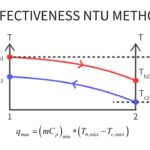1) Boiling is a liquid-to-vapor phase change process just like evaporation, but there are significant differences between the two
a) Evaporation occurs at the liquid–vapor interface when the vapor pressure is less than the saturation pressure of the liquid at a given temperature.
b) Boiling, on the other hand, occurs at the solid–liquid interface when a liquid is brought into contact with a surface maintained at a temperature  sufficiently above the saturation temperature
sufficiently above the saturation temperature  of the liquid
of the liquid
c) The boiling heat flux from a solid surface to the fluid is expressed from Newton’s law of cooling as


2) The boiling processes in practice do not occur under equilibrium conditions, and normally the bubbles are not in thermodynamic equilibrium with the surrounding liquid.
a) When the liquid is at a lower temperature than the bubble, heat will be transferred from the bubble into the liquid, causing some of the vapor inside the bubble to condense and the bubble to collapse eventually.
b) When the liquid is at a higher temperature than the bubble, heat will be transferred from the liquid to the bubble, causing the bubble to grow and rise to the top under the influence of buoyancy.
3) Boiling is classified as pool boiling or flow boiling, depending on the presence of bulk fluid motion
a) Boiling is called pool boiling in the absence of bulk fluid flow
b) Flow boiling (or forced convection boiling) in the presence of bulk fluid flow
c) Boiling is said to be subcooled (or local) when the temperature of the main body of the liquid is below the saturation temperature 
d) Saturated (or bulk) when the temperature of the liquid is equal to saturation temperature 


